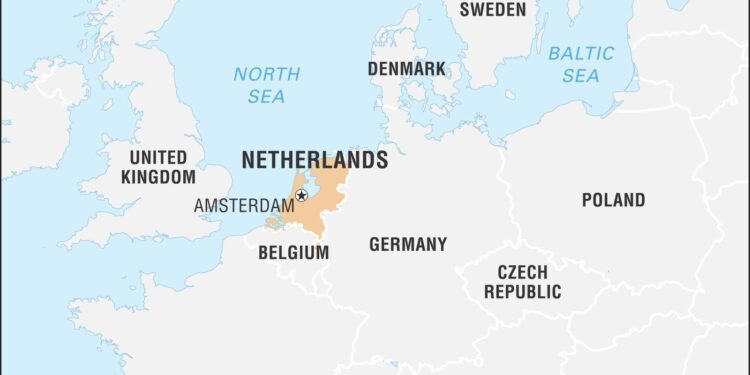In an unprecedented move, the Dutch government has invoked a seldom-used emergency law to regulate the operations of a major Chinese chip manufacturer within its borders. This decision highlights growing geopolitical tensions and concerns over technological security in the semiconductor industry. The step taken by the Netherlands, a global hub for chip production, underscores the strategic importance of advanced technology and the challenges posed by foreign investment in critical sectors. Euronews.com reports on the implications of this rare legal intervention and its potential impact on international trade and technology supply chains.
Netherlands Enacts Exceptional Emergency Law to Regulate Chinese Semiconductor Industry
In an unprecedented move, the Dutch government has activated a seldom-used emergency law to impose strict regulatory controls on a major Chinese semiconductor company operating within its borders. This decisive action reflects growing global concerns over national security and technological sovereignty amid escalating geopolitical tensions surrounding the chip sector. Authorities emphasized that the legislation enables rapid intervention to monitor and limit foreign investments and technology transfers that could compromise Dutch and European interests in advanced microelectronics.
The new regulations outline several measures aimed at ensuring transparency and compliance, including:
- Mandatory government approval for any transactions involving sensitive chip technologies.
- Enhanced scrutiny of supply chain partnerships linked to Chinese firms.
- Immediate reporting requirements for any shifts in ownership or control.
An overview of key aspects of the emergency law application is summarized below:
| Aspect | Description |
|---|---|
| Scope | Chinese semiconductor entities operating within the Netherlands |
| Authority | Ministry of Economic Affairs and Climate Policy |
| Duration | Initial 6 months, subject to renewal |
| Enforcement | Legal sanctions for non-compliance, including fines and operational bans |
Implications for Global Tech Supply Chains and Geopolitical Tensions
The Dutch government’s unprecedented move to invoke a rare emergency law targeting a major Chinese chip manufacturer signals a pivotal shift in the balance of control over critical technology infrastructure. This intervention not only reflects growing concerns over dependency on foreign suppliers but also marks a heightened awareness of the vulnerabilities embedded within global tech supply chains. The decision is poised to ripple through international markets as companies recalibrate strategies around sourcing, manufacturing, and security, aiming to mitigate risks linked to geopolitical instability. Stakeholders across industries are now facing pressing questions about how to protect intellectual property and maintain operational continuity amid increasing regulatory interventions.
Geopolitical tensions, particularly between Western countries and China, are intensifying as technology becomes a proxy battleground for influence and security. The action taken by the Netherlands underscores the strategic importance of semiconductors and the urgent need for diversification in supply chains. Key factors affected include:
- Supply chain resilience: Heightened scrutiny and emerging export controls may prompt companies to adopt multi-sourcing models to avoid concentration risks.
- Technological sovereignty: Nations prioritize domestic R&D and manufacturing capabilities to reduce foreign dependency.
- Trade and diplomatic relations: Sanctions and emergency measures could escalate retaliatory policies, complicating cross-border collaborations.
| Aspect | Potential Impact | Industry Response |
|---|---|---|
| Supply Chain | Increased complexity & re-routing | Diversifying suppliers & nearshoring |
| Investment | Surge in domestic chip production | Government-backed innovation funds |
| Global Trade | Heightened tensions & tariffs | Strategic alliances & new trade pacts |
Policy Recommendations for Balancing National Security and International Trade Relations
To navigate the delicate intersection of safeguarding national security and fostering robust international trade, policymakers must implement a multi-faceted approach that prioritizes transparency and strategic risk assessment. Enhanced due diligence measures should be mandatory for foreign investments in critical sectors, ensuring that technology transfers do not compromise national interests. Governments could establish bilateral security frameworks with key trading partners, facilitating information sharing and joint oversight without stifling economic collaboration. Such frameworks would help balance sovereignty with globalization, enabling prompt responses to potential threats while maintaining open trade channels.
Additionally, a dynamic regulatory environment that adapts to rapidly evolving technologies is essential. This could involve setting up dedicated task forces specializing in emerging industries like semiconductors, AI, and telecommunications, enabling targeted scrutiny and swift policy adjustments. The table below summarizes core policy pillars proposed for balancing security and trade:
| Policy Pillar | Key Action | Expected Outcome |
|---|---|---|
| Transparency & Reporting | Mandatory investment disclosures | Early threat detection |
| Bilateral Security Frameworks | Information exchange agreements | Improved trust & cooperation |
| Task Forces for Emerging Tech | Specialized monitoring teams | Agile regulatory responses |
| Risk-Based Screening | Targeted investment reviews | Focused resource allocation |
The Conclusion
The invocation of the Netherlands’ rare emergency law marks a significant escalation in the ongoing tensions surrounding global semiconductor supply chains and international trade relations. As officials move to limit the operations of the Chinese chipmaker amidst concerns over national security and technological sovereignty, the decision underscores the complexities governments face in balancing economic interests with strategic imperatives. Developments in this case will be closely watched by industry stakeholders and international observers alike, as they may set important precedents for future regulatory interventions in the high-stakes semiconductor sector.
















